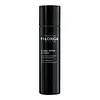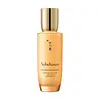What's inside
What's inside
 Key Ingredients
Key Ingredients

 Benefits
Benefits

 Concerns
Concerns

 Ingredients Side-by-side
Ingredients Side-by-side

Water
Skin ConditioningCaprylic/Capric Triglyceride
MaskingHeptyl Undecylenate
EmollientPropylene Glycol
HumectantGlycerin
HumectantButylene Glycol
HumectantMannitol
HumectantParfum
MaskingSimmondsia Chinensis Seed Oil
EmollientTocopheryl Acetate
AntioxidantHydroxyethyl Acrylate/Sodium Acryloyldimethyl Taurate Copolymer
Emulsion StabilisingHydroxyacetophenone
AntioxidantPolyacrylate Crosspolymer-6
Emulsion StabilisingCaprylyl Glycol
EmollientSucrose Palmitate
EmollientLecithin
EmollientLysolecithin
EmulsifyingSodium Hyaluronate
HumectantPolysorbate 20
EmulsifyingPaeonia Albiflora Root Extract
Skin ConditioningBorago Officinalis Seed Oil
EmollientOenothera Biennis Oil
EmollientSodium Polyacrylate
AbsorbentCamellia Oleifera Seed Oil
Skin ConditioningGlyceryl Linoleate
EmollientPrunus Amygdalus Dulcis Oil
Skin ConditioningNiacinamide
Smoothing3-O-Ethyl Ascorbic Acid
Skin ConditioningLactobacillus Ferment
Skin ConditioningPotassium Azeloyl Diglycinate
Skin ConditioningSodium Chloride
MaskingSodium Phytate
Ceramide NP
Skin ConditioningPolysorbate 60
EmulsifyingSorbitan Isostearate
Emulsifying1,2-Hexanediol
Skin ConditioningBisabolol
MaskingGlucose
HumectantPhenoxyethanol
PreservativeTocopherol
AntioxidantBeta-Sitosterol
Emulsion StabilisingPhytic Acid
Squalene
EmollientCitric Acid
BufferingUndaria Pinnatifida Extract
Skin ConditioningPotassium Chloride
Acetyl Tetrapeptide-11
Skin ConditioningPotassium Sorbate
PreservativeCalcium Chloride
AstringentAcetyl Tetrapeptide-9
Skin ConditioningCI 19140
Cosmetic ColorantMagnesium Sulfate
Glutamine
Skin ConditioningCI 17200
Cosmetic ColorantSodium Phosphate
BufferingAscorbic Acid
AntioxidantSodium Acetate
BufferingLysine Hcl
Skin ConditioningArginine Hcl
Skin ConditioningAlanine
MaskingHistidine Hcl
Skin ConditioningValine
MaskingLeucine
Skin ConditioningThreonine
Isoleucine
Skin ConditioningTryptophan
MaskingPhenylalanine
MaskingTyrosine
MaskingGlycine
BufferingPolysorbate 80
EmulsifyingSerine
MaskingCystine
MaskingCyanocobalamin
Skin ConditioningGlutathione
Asparagine
MaskingAspartic Acid
MaskingOrnithine Hcl
Skin ConditioningGlutamic Acid
HumectantNicotinamide Adenine Dinucleotide
Skin ConditioningProline
Skin ConditioningMethionine
Skin ConditioningTaurine
BufferingHydroxyproline
Skin ConditioningGlucosamine Hcl
Coenzyme A
Skin ConditioningSodium Glucuronate
HumectantThiamine Diphosphate
Skin ConditioningRetinyl Acetate
Skin ConditioningInositol
HumectantNiacin
SmoothingPyridoxine Hcl
Skin ConditioningBiotin
AntiseborrhoeicCalcium Pantothenate
Riboflavin
Cosmetic ColorantSodium Tocopheryl Phosphate
AntioxidantThiamine Hcl
MaskingFolic Acid
Skin ConditioningWater, Caprylic/Capric Triglyceride, Heptyl Undecylenate, Propylene Glycol, Glycerin, Butylene Glycol, Mannitol, Parfum, Simmondsia Chinensis Seed Oil, Tocopheryl Acetate, Hydroxyethyl Acrylate/Sodium Acryloyldimethyl Taurate Copolymer, Hydroxyacetophenone, Polyacrylate Crosspolymer-6, Caprylyl Glycol, Sucrose Palmitate, Lecithin, Lysolecithin, Sodium Hyaluronate, Polysorbate 20, Paeonia Albiflora Root Extract, Borago Officinalis Seed Oil, Oenothera Biennis Oil, Sodium Polyacrylate, Camellia Oleifera Seed Oil, Glyceryl Linoleate, Prunus Amygdalus Dulcis Oil, Niacinamide, 3-O-Ethyl Ascorbic Acid, Lactobacillus Ferment, Potassium Azeloyl Diglycinate, Sodium Chloride, Sodium Phytate, Ceramide NP, Polysorbate 60, Sorbitan Isostearate, 1,2-Hexanediol, Bisabolol, Glucose, Phenoxyethanol, Tocopherol, Beta-Sitosterol, Phytic Acid, Squalene, Citric Acid, Undaria Pinnatifida Extract, Potassium Chloride, Acetyl Tetrapeptide-11, Potassium Sorbate, Calcium Chloride, Acetyl Tetrapeptide-9, CI 19140, Magnesium Sulfate, Glutamine, CI 17200, Sodium Phosphate, Ascorbic Acid, Sodium Acetate, Lysine Hcl, Arginine Hcl, Alanine, Histidine Hcl, Valine, Leucine, Threonine, Isoleucine, Tryptophan, Phenylalanine, Tyrosine, Glycine, Polysorbate 80, Serine, Cystine, Cyanocobalamin, Glutathione, Asparagine, Aspartic Acid, Ornithine Hcl, Glutamic Acid, Nicotinamide Adenine Dinucleotide, Proline, Methionine, Taurine, Hydroxyproline, Glucosamine Hcl, Coenzyme A, Sodium Glucuronate, Thiamine Diphosphate, Retinyl Acetate, Inositol, Niacin, Pyridoxine Hcl, Biotin, Calcium Pantothenate, Riboflavin, Sodium Tocopheryl Phosphate, Thiamine Hcl, Folic Acid
Water
Skin ConditioningButylene Glycol
HumectantPanax Ginseng Root Water
MaskingGlycerin
HumectantPentaerythrityl Tetraethylhexanoate
EmollientHydrogenated Poly(C6-14 Olefin)
EmollientDimethicone
Emollient1,2-Hexanediol
Skin ConditioningButyrospermum Parkii Butter
Skin ConditioningPolyglyceryl-3 Methylglucose Distearate
EmulsifyingDimethicone/Vinyl Dimethicone Crosspolymer
Skin ConditioningGlyceryl Stearate
EmollientCarbomer
Emulsion StabilisingCetearyl Alcohol
EmollientGlyceryl Stearate Citrate
EmollientHydrogenated Vegetable Oil
EmollientHydroxyethyl Acrylate/Sodium Acryloyldimethyl Taurate Copolymer
Emulsion StabilisingStearic Acid
CleansingTromethamine
BufferingXanthan Gum
EmulsifyingGlyceryl Caprylate
EmollientParfum
MaskingPalmitic Acid
EmollientEthylhexylglycerin
Skin ConditioningDisodium EDTA
Methoxy PEG-114/Polyepsilon Caprolactone
BufferingAdenosine
Skin ConditioningSorbitan Isostearate
EmulsifyingPolysorbate 60
EmulsifyingNarcissus Tazetta Bulb Extract
AstringentHydrolyzed Ginseng Saponins
Skin ConditioningCeramide NP
Skin ConditioningLinalool
PerfumingPhenoxyethanol
PreservativeHoney
HumectantRehmannia Glutinosa Root Extract
Skin ConditioningLimonene
PerfumingPaeonia Lactiflora Root Extract
Skin ConditioningLilium Candidum Bulb Extract
Skin ConditioningPolygonatum Odoratum Rhizome Extract
Skin ConditioningNelumbo Nucifera Flower Extract
Skin ConditioningTocopherol
AntioxidantWater, Butylene Glycol, Panax Ginseng Root Water, Glycerin, Pentaerythrityl Tetraethylhexanoate, Hydrogenated Poly(C6-14 Olefin), Dimethicone, 1,2-Hexanediol, Butyrospermum Parkii Butter, Polyglyceryl-3 Methylglucose Distearate, Dimethicone/Vinyl Dimethicone Crosspolymer, Glyceryl Stearate, Carbomer, Cetearyl Alcohol, Glyceryl Stearate Citrate, Hydrogenated Vegetable Oil, Hydroxyethyl Acrylate/Sodium Acryloyldimethyl Taurate Copolymer, Stearic Acid, Tromethamine, Xanthan Gum, Glyceryl Caprylate, Parfum, Palmitic Acid, Ethylhexylglycerin, Disodium EDTA, Methoxy PEG-114/Polyepsilon Caprolactone, Adenosine, Sorbitan Isostearate, Polysorbate 60, Narcissus Tazetta Bulb Extract, Hydrolyzed Ginseng Saponins, Ceramide NP, Linalool, Phenoxyethanol, Honey, Rehmannia Glutinosa Root Extract, Limonene, Paeonia Lactiflora Root Extract, Lilium Candidum Bulb Extract, Polygonatum Odoratum Rhizome Extract, Nelumbo Nucifera Flower Extract, Tocopherol
 Reviews
Reviews

Ingredients Explained
These ingredients are found in both products.
Ingredients higher up in an ingredient list are typically present in a larger amount.
1,2-Hexanediol is a synthetic liquid and another multi-functional powerhouse.
It is a:
- Humectant, drawing moisture into the skin
- Emollient, helping to soften skin
- Solvent, dispersing and stabilizing formulas
- Preservative booster, enhancing the antimicrobial activity of other preservatives
Butylene Glycol (or BG) is used within cosmetic products for a few different reasons:
Overall, Butylene Glycol is a safe and well-rounded ingredient that works well with other ingredients.
Though this ingredient works well with most skin types, some people with sensitive skin may experience a reaction such as allergic rashes, closed comedones, or itchiness.
Learn more about Butylene GlycolCeramide NP is a type of ceramide and formally known as ceramide 3.
Ceramides are intercellular lipids naturally found in our skin that bonds dead skin cells together to create a barrier. They are known for their ability to hold water and thus are a great ingredient for dry skin.
Ceramides are an important building block for our skin barrier. A stronger barrier helps the skin look more firm and hydrated. By bolstering the skin ceramides act as a barrier against irritating ingredients. This can help with inflammation as well.
If you would like to eat ceramides, sweet potatoes contain a small amount.
Read more about other common types of ceramides here:
Ceramide AP
Ceramide EOP
Glycerin is already naturally found in your skin. It helps moisturize and protect your skin.
A study from 2016 found glycerin to be more effective as a humectant than AHAs and hyaluronic acid.
As a humectant, it helps the skin stay hydrated by pulling moisture to your skin. The low molecular weight of glycerin allows it to pull moisture into the deeper layers of your skin.
Hydrated skin improves your skin barrier; Your skin barrier helps protect against irritants and bacteria.
Glycerin has also been found to have antimicrobial and antiviral properties. Due to these properties, glycerin is often used in wound and burn treatments.
In cosmetics, glycerin is usually derived from plants such as soybean or palm. However, it can also be sourced from animals, such as tallow or animal fat.
This ingredient is organic, colorless, odorless, and non-toxic.
Glycerin is the name for this ingredient in American English. British English uses Glycerol/Glycerine.
Learn more about GlycerinThis is a synthetic polymer. It helps improve the texture of products by adding thickness and gel-like feel.
It is also an emulsifer, meaning it prevents ingredients such as oil and water from separating. It also helps evenly disperse other ingredients.
Parfum is a catch-all term for an ingredient or more that is used to give a scent to products.
Also called "fragrance", this ingredient can be a blend of hundreds of chemicals or plant oils. This means every product with "fragrance" or "parfum" in the ingredients list is a different mixture.
For instance, Habanolide is a proprietary trade name for a specific aroma chemical. When used as a fragrance ingredient in cosmetics, most aroma chemicals fall under the broad labeling category of “FRAGRANCE” or “PARFUM” according to EU and US regulations.
The term 'parfum' or 'fragrance' is not regulated in many countries. In many cases, it is up to the brand to define this term.
For instance, many brands choose to label themselves as "fragrance-free" because they are not using synthetic fragrances. However, their products may still contain ingredients such as essential oils that are considered a fragrance by INCI standards.
One example is Calendula flower extract. Calendula is an essential oil that still imparts a scent or 'fragrance'.
Depending on the blend, the ingredients in the mixture can cause allergies and sensitivities on the skin. Some ingredients that are known EU allergens include linalool and citronellol.
Parfum can also be used to mask or cover an unpleasant scent.
The bottom line is: not all fragrances/parfum/ingredients are created equally. If you are worried about fragrances, we recommend taking a closer look at an ingredient. And of course, we always recommend speaking with a professional.
Learn more about ParfumPhenoxyethanol is a preservative that has germicide, antimicrobial, and aromatic properties. Studies show that phenoxyethanol can prevent microbial growth. By itself, it has a scent that is similar to that of a rose.
It's often used in formulations along with Caprylyl Glycol to preserve the shelf life of products.
Polysorbate 60 is used to help stabilize products. It is a surfactant and emulsifier. These properties help keep ingredients together in a product. Surfactants help reduce surface tension between ingredients with different states, such as liquids and solids. Emulsifiers help prevent oils and waters from separating.
Polysorbate 60 is sorbitol-based and created from the ethoxylation of sorbitan. Ethoxylation is a chemical reaction used to add ethylene oxide. Sorbitan is a the dehydrated version of sorbitol, a sugar found in fruits.
In this case, the 60 comes from reacting 60 units of ethylene oxide with sorbitan.
Polysorbates are commonly used in medicine and foods.
Learn more about Polysorbate 60Sorbitan Isostearate is an emulsifer and cleaning agent. It is created from isostearic acid and sorbitol.
As an emulsifier, Sorbitan Isostearate prevents oils and water from separating.
Due to its isostearic acid base, it may not be safe for Malassezia or fungal acne.
Learn more about Sorbitan IsostearateTocopherol (also known as Vitamin E) is a common antioxidant used to help protect the skin from free-radicals and strengthen the skin barrier. It's also fat soluble - this means our skin is great at absorbing it.
Vitamin E also helps keep your natural skin lipids healthy. Your lipid skin barrier naturally consists of lipids, ceramides, and fatty acids. Vitamin E offers extra protection for your skin’s lipid barrier, keeping your skin healthy and nourished.
Another benefit is a bit of UV protection. Vitamin E helps reduce the damage caused by UVB rays. (It should not replace your sunscreen). Combining it with Vitamin C can decrease sunburned cells and hyperpigmentation after UV exposure.
You might have noticed Vitamin E + C often paired together. This is because it is great at stabilizing Vitamin C. Using the two together helps increase the effectiveness of both ingredients.
There are often claims that Vitamin E can reduce/prevent scarring, but these claims haven't been confirmed by scientific research.
Learn more about TocopherolWater. It's the most common cosmetic ingredient of all. You'll usually see it at the top of ingredient lists, meaning that it makes up the largest part of the product.
So why is it so popular? Water most often acts as a solvent - this means that it helps dissolve other ingredients into the formulation.
You'll also recognize water as that liquid we all need to stay alive. If you see this, drink a glass of water. Stay hydrated!
Learn more about Water